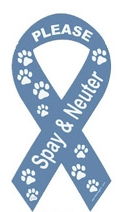The Miniature Bull Terrier has its origins in the English Bull Terrier, the Dalmatian and the Bulldog and has first been documented in 1872. It is a muscular, well balanced dog, with an intelligent expression.
A unique feature of this dog is its down-faced, egg-shaped head. It has a long head with a surface that has no hollows, but is completely filled and a flat skull at the top. Looked at from its profile, this dog has a curved face from the top of the skull to the tip of the black, bent nose. The distance from the tip of the nose to the eyes is visibly greater than the distance from the eyes to the top of the skull. Its narrow, triangular eyes are black or dark brown and its ears are small and placed close to one another.
It has sound, strong teeth and a scissor bite. Its body is well rounded, its chest is broad and the loins have strong muscles. There is an elegant curve formed from brisket to belly. Looking at the forequarters, the shoulders are strong and the elbows are kept straight. The forelegs stand perfectly parallel. The hindlegs are also parallel to one another and the thighs are well muscled. The tail is short and held horizontally.
Its short, flat, glossy coat can be pure white, black, brindle, red and fawn. Tricolor is also accepted. Blue and liver are not accepted colors. During winters, an undercoat can also be present. Minimal grooming is necessary.
Where height is concerned, it should be below 14 inches (35.5 cm) and not below10 inches (25.4 cm). There is no limit with regard to weight. At the beginning of the 1900s, weight was actually essential in determining the difference between the breeds. Because some of these miniature dogs ended up looking more like a Chihuahua than a Bull Terrier, the feature used for distinguishing was changed from weight to height. However, weight must be proportionate to the height, and it is usually somewhere between 20 and 35 lbs (9 and 16 kg).
The Miniature Bull Terrier resembles the Bull Terrier and other terriers in temperament, being loving, courageous but also stubborn. When having to confront much larger dogs, these miniature dogs seem not to be aware of their own limited size, as they will not back down. Such confrontations can be prevented though if proper training is put in place. This-type dogs are appropriate for people who want to have a dog, but have limited space. They are nice company, as they are energetic and playful. They are especially active while they are puppies, becoming less energetic with age.
Where training is concerned, these dogs need lots of training especially at an early age, since they are quite independent and can be stubborn. They should also get adjusted to socializing from an early age and be trained to obey. If not properly put through exercising and if diet is not taken care of, they can become obese.
The Miniature Bull Terrier is a courageous dog that loves to play, with an even temperament and, although it can be obstinate, it is also willing to accept discipline.




